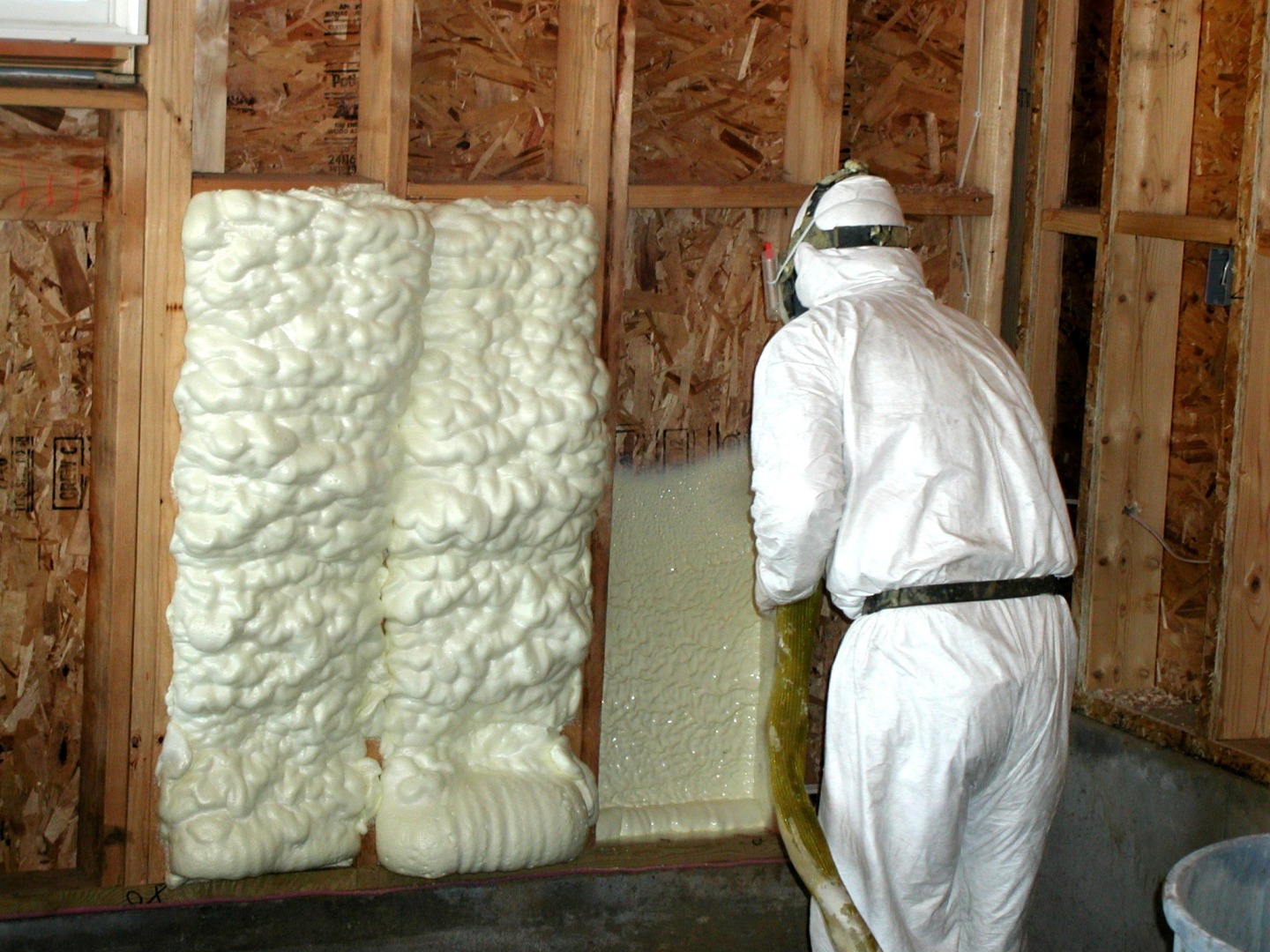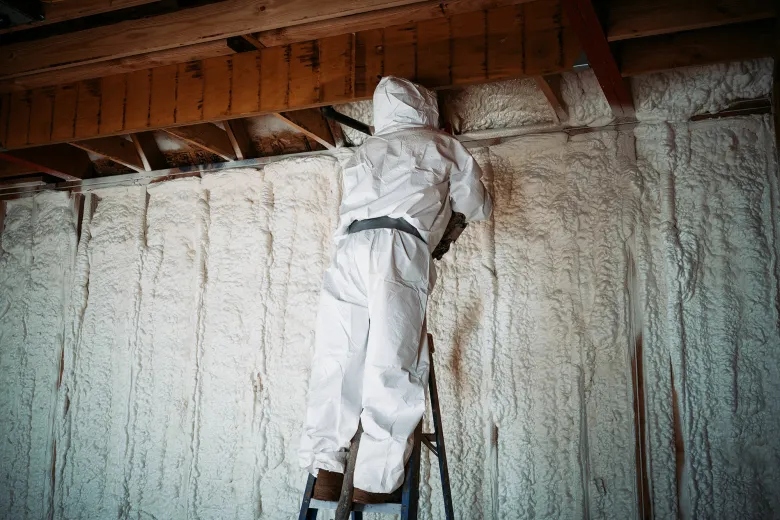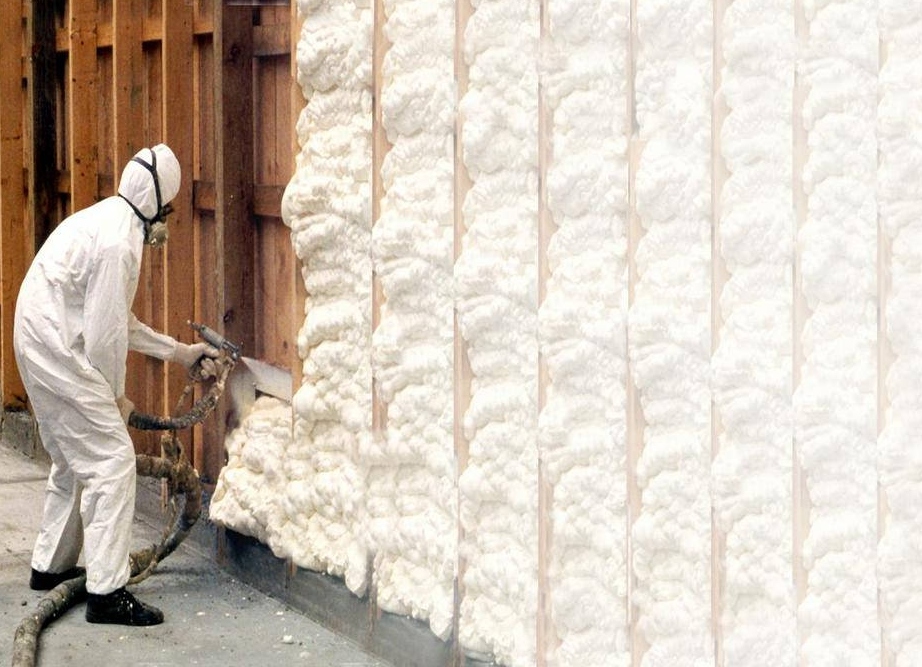Comments
- No comments found

Spray foam insulation is an industry staple and widely used material for sealing homes.
Makers commonly craft it from polyol resin and isocyanate, which have unique properties that give the combo mainstay status in countless homes worldwide. From keeping attics warm and crawl spaces free of pests, it is a reliable sealant. The chemistry, reactivity and science behind how spray foam insulation works explain why professionals have relied on it for so long.

You can easily imagine someone spraying foam insulation as it looks like cotton candy, but in no time, it is hard to the touch. Installers use a spray gun connected to one or two containers holding the ingredients.
The polyurethane — the A-side — and the isocyanate — the B-side — mix as they come out of the nozzle, causing a chemical reaction and releasing heat. The insulation erupts precisely and expands to fit into whatever nooks it needs to fill. This is called polymerisation, an exothermic reaction that happens seconds after the mixture flows out of the applicator. The recipe includes additives like expanding agents that activate at this point.
The scientific properties of spray foam insulation depend on its type. There are open- and closed-cell variants. They have low and high densities, respectively, because of the quantity of air pockets present after it’s finished curing. Because open cell has more bubbles, it expands between 60 and 100 times its original size and dries quickly. Closed cell takes much longer to dry and does not expand as much because it contains more structure.
Off-gassing occurs as foams dry, which explains odours that might come off newly administered insulation. It’s the chemical process of emitting gases from solids.
Closed cell is more sturdy, while open cell remains somewhat buoyant. Professionals may even recommend closed-cell insulation to boost the structural integrity of the building. The other notable main difference between them is their R-value.
This is how spray foam insulation keeps homes cosy no matter the time of year. The R-value describes its ability to ignore heat flow. Insulation is opaque, making it not susceptible to radiation. High thermal resistance is ideal for keeping temperatures regulated within a building. Many might choose closed-cell spray foam insulation over open because its R-value is higher.
Adding more layers can compensate for open-cell insulation’s lower thermal resistance. The airiness of open cells is due to weakly bonded molecules, which prevent heat from transferring to places it shouldn’t.
Closed-cell insulation is more substantial by nature because it relies on low-conductivity gases called blowing agents that promote the formulation of more robust cellular structures.
To compare, closed cell could have an R-value of 6.5 to 7, while open cell sits around 3.5 to 4. Competitors like loose fibreglass only achieve a maximum of 3.8, and cotton maintains an average of 3.3.
The beauty of spray foam insulation is its ability to defend itself against several ways heat travels, including:
Convective: When heat travels through air and water.
Conductive: When heat moves from a high- to low-temperature region.
Radiant: When heat as light releases or is absorbed by a surface.
Spray foam insulation is responsible for keeping water and air out, so what is its chemical foundation gives it those abilities? The makeup of open-cell insulation is more porous, allowing moisture to enter more easily. Using faced insulation methods for lining improves the vapour barrier if needed. The fact that it isn’t waterproof would deter many people, primarily depending on factors like the local climate and the building’s age.
However, this combined with its lower R-value, makes it ideal if you live in an area with regularly loud, pelting rain or near train tracks because it has sound-dampening qualities.
Closed-cell insulation stops air and vapour almost completely. Closed cell’s water resistance makes it perfect for keeping mould and mildew growth at bay, though open cell can assist with this as any insulation is better than none.
Another chemical difference between open- and closed-cell applications is the propelling agents. Closed cell requires hydrofluorocarbons (HFCs), and open cell can use carbon dioxide and water instead — making it more eco-friendly. These are some of the most contentious aspects of spray foam insulation because HFC methods are not kind to the climate.
Hydrofluorocarbons work because their reactivity is highly malleable. Professionals typically apply closed-cell insulation with a high-pressure, two-component method, where the A- and B-side mix on-site. Open cells can live in a low-pressure environment mixed before application because it is less intensive.
HFCs were an answer to the previously used chlorofluorocarbons because scientists believed their ozone depletion potential was lower. However, their dependence by countless industries has polluted the atmosphere, making the sector reconsider spray foam insulation’s chemical composition. The EPA intends to ban them in spray foam insulation by 2025.

Some producers replace the resin with plant oil-based ingredients to create more sustainable alternatives to petrochemical insulation. Vegetables and soy are top contenders for lightweight, bio-based foams and curing agents, eliminating prominent carcinogens in traditional mixtures. The science behind eco-friendly materials is fascinating, primarily in how producers could recycle them.
A well-researched possibility is lignin, which comes from paper pulping. Remember the polymerisation process? Lignin can undergo depolymerisation, and professionals could separate the foam into its most essential parts for reuse. Finding a viable chemical solution for spray foam recycling is vital to transforming the industry from one that hardly recycles to one that is entirely circular.
Biopolymers are a carbon-friendly solution because the plants sequester carbon while growing before they become insulation. Other options include:
Polyvinyl alcohol.
Starch.
Polysaccharides.
Ethylene vinyl alcohol.
It’s hard to beat spray foam insulation’s ability to prevent air infiltration, resist thermal conductivity and make building envelopes more energy-efficient. The science behind its creation and application explains why it’s dependable and effective for countless applications, but innovation must continue.
Industry experts can find more ways to make it less environmentally damaging and long-lasting. The spray foam insulation of the future will be safer and cheaper to work with while providing even more benefits for incorporating it into the building process.
Emily Newton is the Editor-in-Chief of Revolutionized. She is a science and technology journalist with over three years covering industry trends and research.
Leave your comments
Post comment as a guest